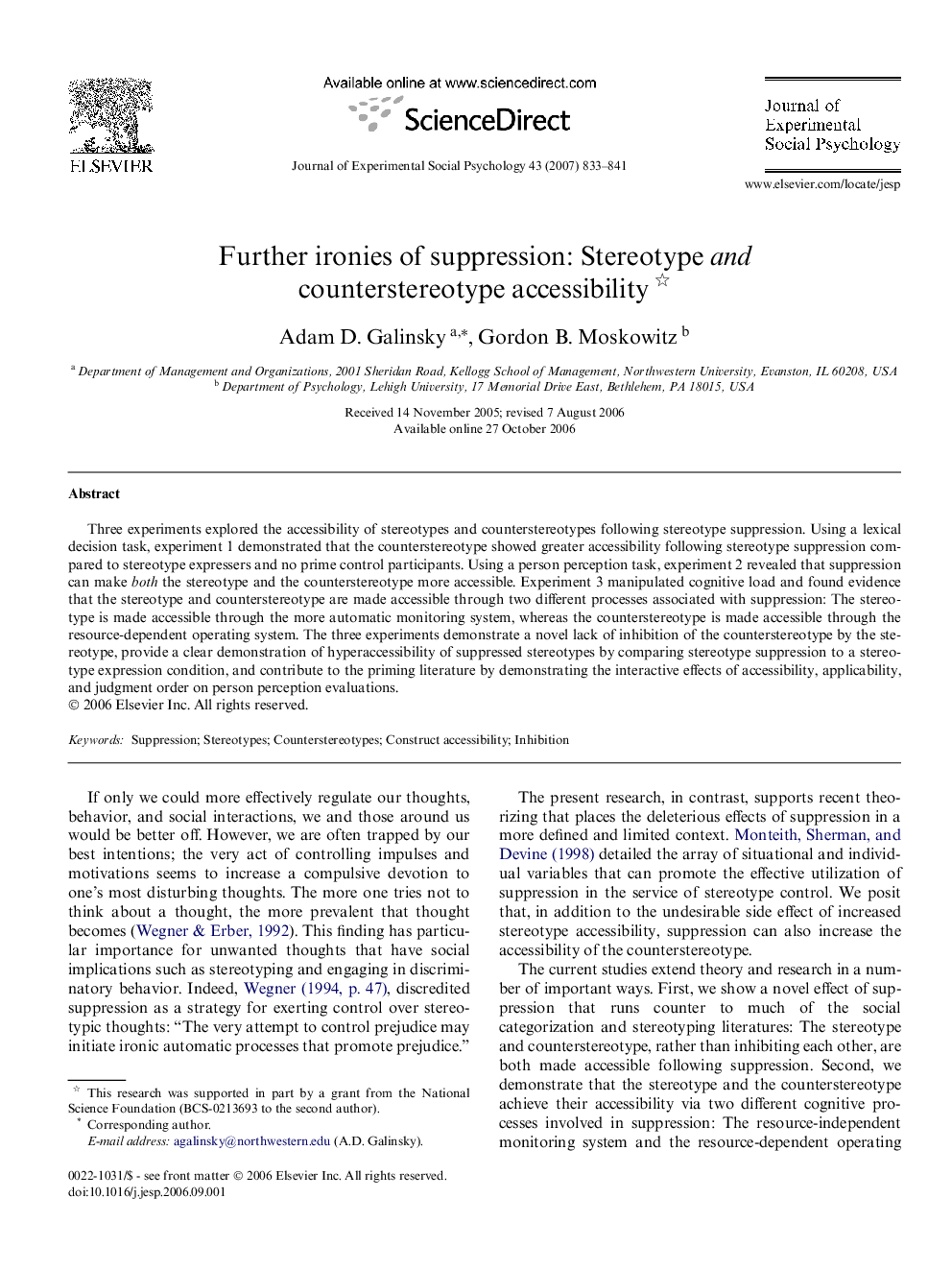| Article ID | Journal | Published Year | Pages | File Type |
|---|---|---|---|---|
| 948591 | Journal of Experimental Social Psychology | 2007 | 9 Pages |
Three experiments explored the accessibility of stereotypes and counterstereotypes following stereotype suppression. Using a lexical decision task, experiment 1 demonstrated that the counterstereotype showed greater accessibility following stereotype suppression compared to stereotype expressers and no prime control participants. Using a person perception task, experiment 2 revealed that suppression can make both the stereotype and the counterstereotype more accessible. Experiment 3 manipulated cognitive load and found evidence that the stereotype and counterstereotype are made accessible through two different processes associated with suppression: The stereotype is made accessible through the more automatic monitoring system, whereas the counterstereotype is made accessible through the resource-dependent operating system. The three experiments demonstrate a novel lack of inhibition of the counterstereotype by the stereotype, provide a clear demonstration of hyperaccessibility of suppressed stereotypes by comparing stereotype suppression to a stereotype expression condition, and contribute to the priming literature by demonstrating the interactive effects of accessibility, applicability, and judgment order on person perception evaluations.
